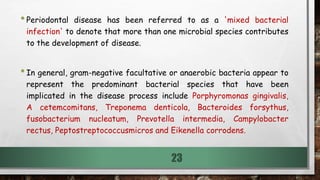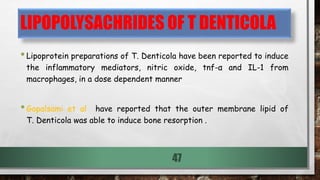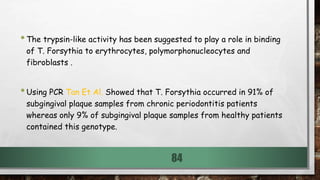This document provides an overview of the host-bacterial interaction theory of periodontal disease. It discusses how periodontal disease was previously thought to be caused solely by calculus, then by nonspecific plaque, and later by specific pathogenic bacteria. The current understanding is that periodontal disease results from the complex interaction between pathogenic bacteria in plaque and the host immune response. Key bacteria implicated in disease include P. gingivalis, A. actinomycetemcomitans, T. denticola, and others. Virulence factors of bacteria like lipopolysaccharides and leukotoxins can promote tissue invasion and evade host defenses. The host response is also important, as an excessive or inadequate response can lead to












































































































































































